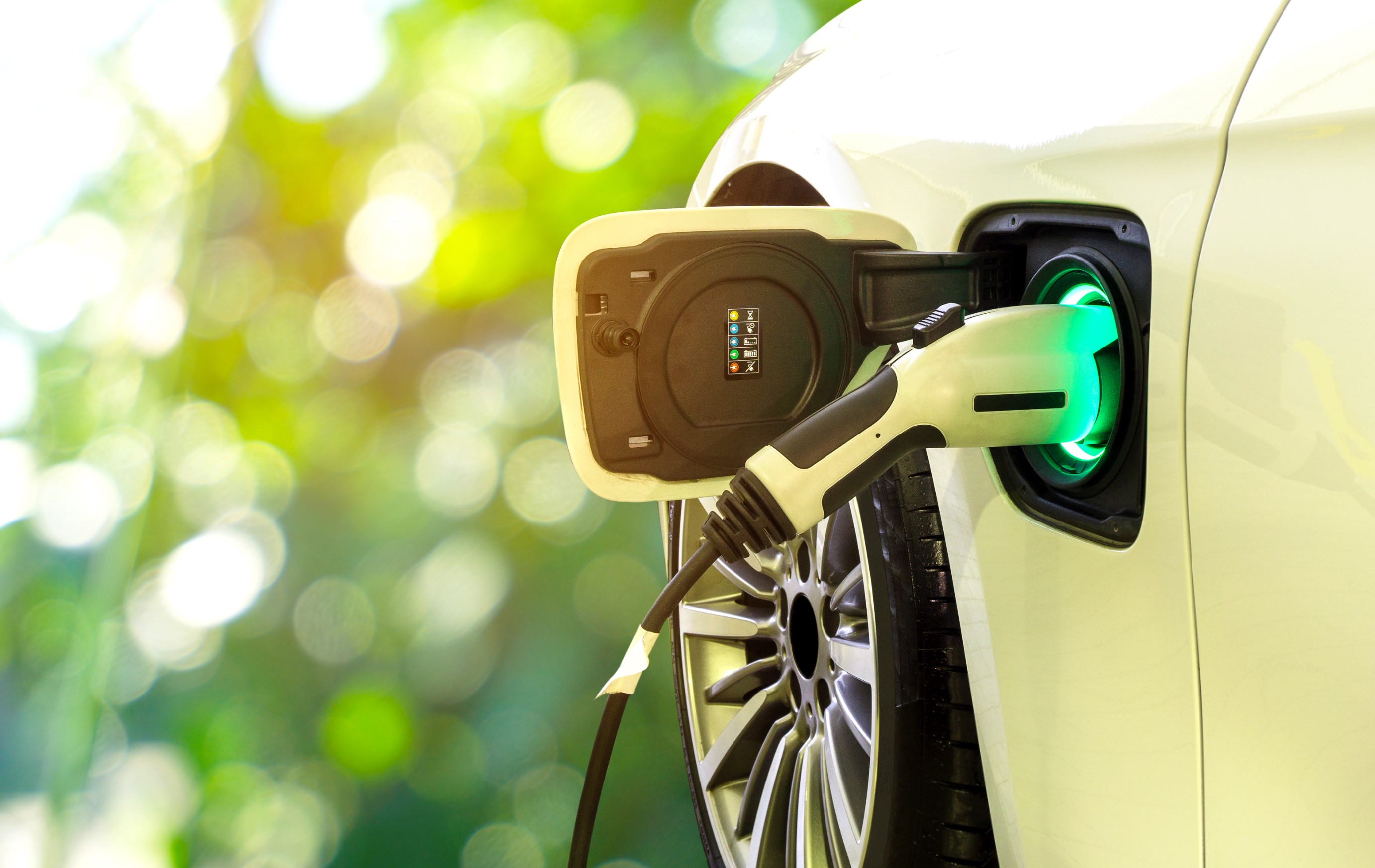EV charging has a big problem — and it has nothing to do with recharge time
EV chargers need to get their app problem under control

Recharging an EV in public is the worst thing about driving an electric car, but not for the reason you might think. Yes, recharging takes longer than filling up a tank of gas, but the EV charging networks’ reliance on mobile apps is the real enemy.
Almost every EV charging network has an app that lets you activate and manage your charging session. And that causes a huge number of problems.
- How long does it take to charge an electric car?
- Here are the best electric cars you can buy right now
- Plus: The big switch to EVs won't happen without this
Think about the last time you visited a gas station. The likelihood is that you pulled up, handed over cash or your credit card to pay, and filled up your tank. Depending on how busy it is, the whole process takes maybe ten minutes at most.
Charging an EV doesn’t work like that. Ignoring the time issue, which gets a lot of attention but is still improving all the time, the whole app situation makes the process of charging so much more difficult than it needs to be.
Apps all over the place
Each network has its own app, so if you only ever use a single charging company that’s not such a big deal. Tesla owners get the best deal, since can only really use the Supercharger network in the U.S. Because each Tesla is tied to an owner's account, charging a Tesla is really as simple as pulling up at a Supercharger and plugging in.
But for everyone else, or Tesla owners who paid out for a CCS-to-Tesla adapter for access to third-party networks, it becomes a bigger problem.
Electricity is electricity, and provided you have the right cable and port, it really makes no difference where you get it. But EV charging stations are run by different companies, all of whom have their own companion app. That means that if you want to use their chargers, you have to download the app, sign up for an account, and hand over your payment information.
Sign up to get the BEST of Tom's Guide direct to your inbox.
Get instant access to breaking news, the hottest reviews, great deals and helpful tips.
Don’t have the app, or the app isn’t working correctly? Tough luck, you have to go and recharge somewhere else.
I currently have four recharging apps on my phone, only two of which I use with great frequency because I don’t drive that far from home with any regularity. One of these apps (GeniePoint) only recharged my car a single time, back when I had to drive to my brother’s wedding in Wales, and has been sitting dormant on my phone ever since.
And because there are no conveniently located GeniePoint chargers near me, my account still has £2.26 of credit lingering in my account. Which leads to the payment issue. While some apps will charge your credit card after each recharge session, others ask you to pay up front by adding credit to your account. And that's credit you can usually only get back by using their recharge stations.
I’m not saying this is necessarily a bad system (though I don’t particularly like it), but it’s another level of inconsistency in an already-convoluted process.
Not all apps are equal
Different companies produce different apps, and all those apps are of wildly differing quality. Most of my charging is done at a local ChargePoint charger, which has never given me any issues. It’s always been able to accurately find my location, and I’ve never had any problems with it crashing, slowing down, or logging me out halfway through setting up a charge.
The same is not true with them all. Ecotricity, which operates car charging points up and down the U.K.’s motorway network, can be quite slow to catch up, and in one annoying instance I had to restart my phone because it crashed right before initializing a charge and wouldn't right itself.
Similarly PodPoint, which can be found in a large number of supermarket and shopping mall parking lots, always seems to take its time loading and figuring out where I am. I'm regularly left standing around waiting for it to do its most basic tasks.
I even came across one charging app which wasn’t an app at all. Instead, you were essentially downloading a hyperlink to the company’s website from the app store. To make matters worse, it didn’t even display the charger I had hoped to use, and the lack of any display or identification on the charger itself meant it was completely unusable.
There has been some push towards unifying the system, or at least there has in the U.K. Zap-Map hosts a service that helps EV owners find charging points that are compatible with their cars, and also has a payment option called Zap-Pay. The idea is that you only need a single account to use multiple charging networks, which is a great idea — in theory, at least.
In practice, it’s not worked out quite so well. There are dozens of different charging networks across the UK, and currently only three networks have actually signed up for this — two of which are still unavailable until they can be fully integrated.
Fortunately automakers themselves appear to have had more success with this. For instance, Mini has worked out a deal with several major U.K. charging networks, including the likes of BP Pulse, ChargePoint, and Osprey. Like Zap-Pay, this would ensure drivers could recharge at any of the included charging stations with a single account.
On top of that, Mini owners can share this feature with up to ten other user accounts, making it possible for them to lend their car to someone else — something that's not too uncommon. Unfortunately, it's reliant on you buying and driving an electric Mini, so other EVs will currently miss out.
What can be done about it?
The major issue is that each of these different companies has its own way of doing things. While that may work in their favor, it’s not very consumer friendly.
Here in the U.K., the Competition and Markets Authority (CMA) has released a report slamming EV charging networks for various reasons. One of these is the fact drivers can find the charging experience “difficult and frustrating.” That’s something I can attest to, even in my short time as an EV owner.
For that reason, the CMA has recommended four principles to improve the charging situation: make chargers easier to find, make costs clearer, make it easier for cars to use all chargers, and, most crucially, simplify payments. Because right now the app-based payment and charging system is anything but simple.
Meanwhile, the charging industry may well decide it’s in everyone’s best interests if they all work together, if we’re lucky. Like how Tesla has suddenly decided it’s a good idea to open up the Supercharger network to none Tesla vehicles.
Admittedly, in this instance the change was jump-started after Tesla was offered some incentives by the Norwegian government, but at least it's happening.
Similarly, it may well require government intervention elsewhere to tell charging networks that they need to play nice or else. It (mostly) worked when the EU told tech companies to drop proprietary chargers in favor of microUSB, and it pushed automakers to adopt the CCS charging standard on their own cars — something even Tesla got on board with in the region.
Governments, the current U.K. government most of all, do not have a great track record where apps and technology are concerned. But giving charging networks an incentive to work together will help speed the process along, whatever those incentives might be.
As for me, I just want a simple and effective way to recharge my car, whether that’s adding contactless card readers to charging stations, or a single unified app for every car charger in the country. Either way, let’s just end the pandemonium EV owners have to deal with right now.

Tom is the Tom's Guide's UK Phones Editor, tackling the latest smartphone news and vocally expressing his opinions about upcoming features or changes. It's long way from his days as editor of Gizmodo UK, when pretty much everything was on the table. He’s usually found trying to squeeze another giant Lego set onto the shelf, draining very large cups of coffee, or complaining about how terrible his Smart TV is.
-
Goblin4 Why have an app at all or RFID? It does not work in underground car parks, not everyone have a phone, PAYG users don't have data services on their phone and can't lend your car to someone else without 20 or so apps and cards etc. etc..Reply
Contactless payment or credit card is the way to go. No app or phone or mobile network issues. Also, when I'm using a petrol station to charge up, why can't I pay cash like other car users? Why discriminate against electric car users. -
Goblin4 Oh, what about security. The more apps you use, the more networks you need to sign up with and provide all sorts of data including payment details. In the current hacking climate where everyone and everybody is getting hacked, do you trust your charging networks to keep your data safe? And in the UK, it's not 4 networks, it's more like 20.Reply
If you have an ICE vehicle, all this nonsense is irrelevant. You fill up and pay. That's it.
Nobody tracks where you filled up, and no unnecessary information was taken from you. Why can't we do the same with electricity? I vote Contactless, Credit Card and where possible, cash payments only. NO RFIDs, no apps, no mobile phones, no reception issues. -
USAFRet Reply
Because there are a bunch of brogrammers in charge of how we're supposed to interact with these vehicles.Goblin4 said:Why have an app at all or RFID?
It works for them, so it must work for everyone. -
JeffG1 ReplyThe same is not true with them all. Ecotricity, which operates car charging points up and down the U.K.’s motorway network, can be quite slow to catch up,
Seeing as this article is only one day old, I think it's you that needs to catch up. Ecotricity no longer operates car charging points, having been taken over by Gridserve, who are currently replacing all the old units with new, highly reliable units catering for more types of vehicle, and without requiring the use of an app.
Oh, and I didn't realise we had gas stations in the UK.
